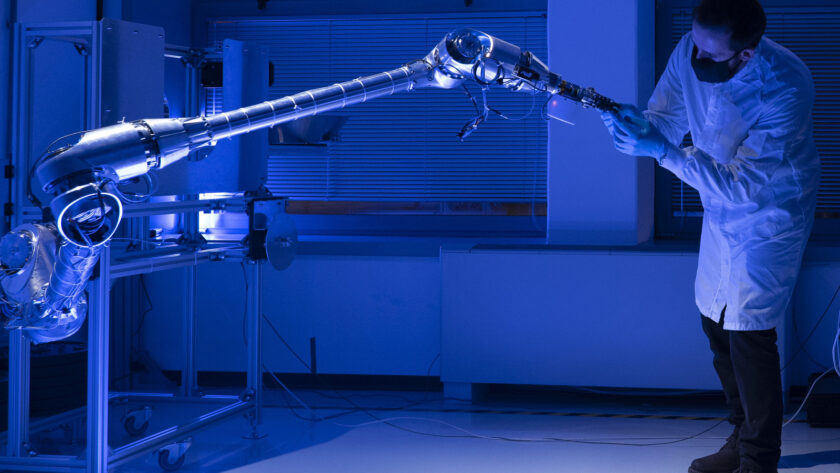The perseverance of NASA is currently looking for the surface of Mars to find the right landing strip for the space aircraft to return the upcoming Mars (MSR) samples. When the preparation for the MSR campaign continues, the European Space Agency (ESA) has specified the robot arm that will take the soil sample tube collected by Rover Perseverance and safely move it to the Mars launch system.
Named the transfer arm sample (STA), it will be designed and produced by Italian aerospace company Leonardo. What is special about the robot arm, which is about 8.2 feet long, is said to be “seeing” and “feeling” on his own algorithmic skin, and that will also be able to make important decisions themselves. Already past the prototyping phase, the robot arm is scheduled for shipping in 2025 so that it can be attached to the landing of NASA sampling.
Labeling as “gems-in-mahkota robotics space,” robot arms copy a fundamental design of the human arm, complete with its own elbow, shoulders, and wrists themselves. Armed with its own brain and mechanical eye (ie, dual camera system), STA will perform various tasks such as avoiding the impact with large mars, collecting the right sample tubes, shifting everything into a container, and ensuring that the lid is closed before the mission vehicle is back exploded from the surface of Mars.
What’s next?
David Parker, Director of Esa of Robot and Robot exploration, said that “handling valuable Mars samples and preparing them for shipping on an extraordinary journey from Mars to earth is an extraordinary achievement.” ESA signed an official contract with Leonardo, who led the European industry consortium at Farnborough International Airshow and will now oversee the final version that was tested and integrated in the coming years.
The mission of returning a historic mars sample is a joint collaboration between NASA and ESA which aims to study the regolith mars (land) on earth for the first time with the help of sophisticated equipment. This is also the first mission involving the launch of vehicles from the surface of other planets. Scheduled to start in the mid until the late 2020s, the vehicle returned that carrying all Mars soil samples was expected to arrive on Earth in the early 2030s.
The next step is the launch of the sampling lander that will carry a sampling plow, as well as a rocket called the Mars Climbing Vehicle. With the help of the robot arm, the sample will be moved from perseverance to the rocket. Loaded with samples, Mars climbing vehicles will then fly to orbit where the orbiter of the earth that will return to collect samples and load them into the vehicle in. The orbit will transport vehicles in the form of disks close to the earth, where the last point will release and walk through the atmosphere and eventually land.





